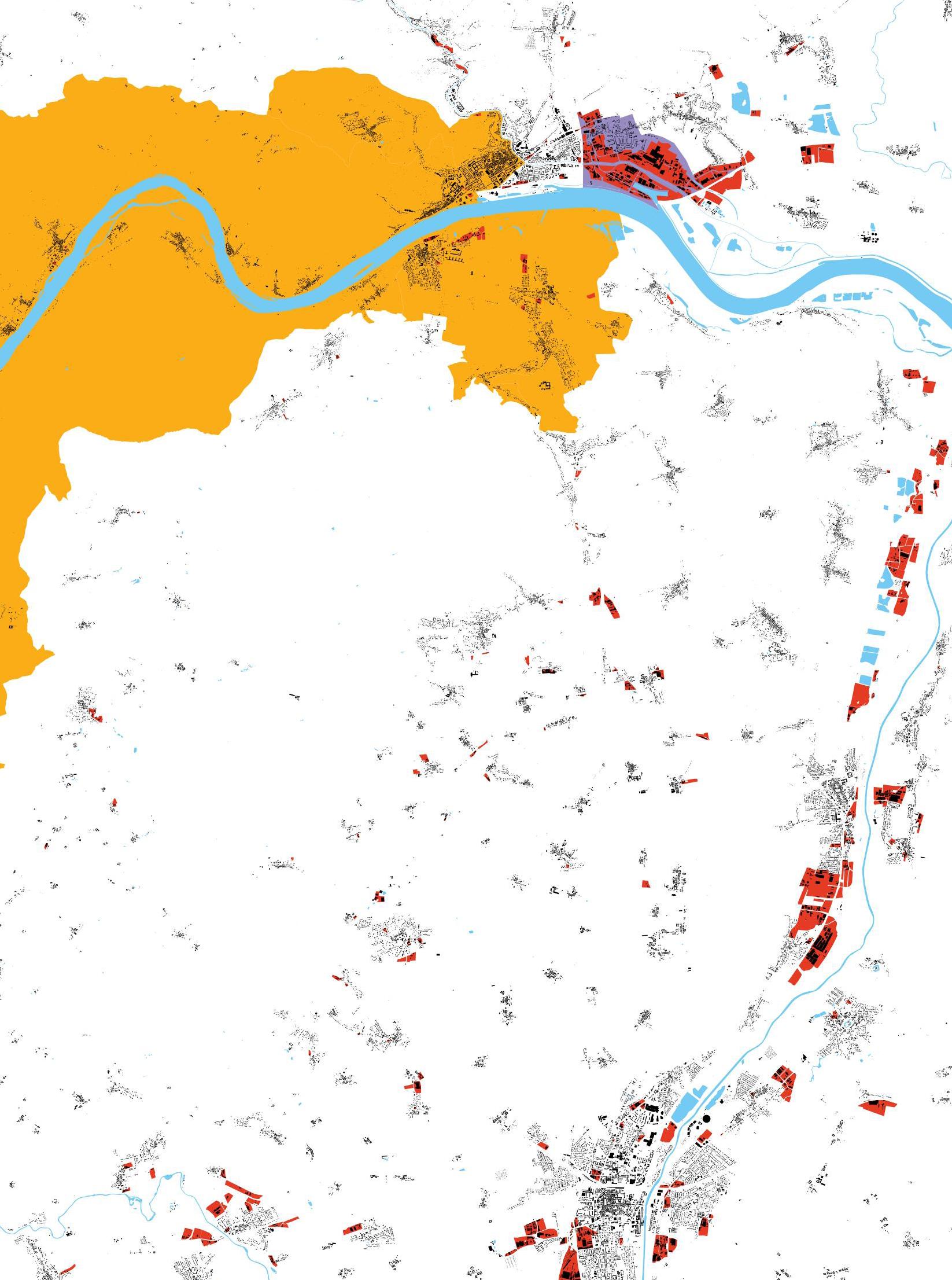
3 minute read
Disposition of UNESCO
Officially, UNESCO is relatively toothless when it comes to protecting and preserving world heritage sites. The organization can place sites on a list of ‘endangered world heritage sites’ or retract the world heritage status altogether. UNESCO’s role, as they describe it on their website, is to advance heritage protection by “advancing cooperation in education, the sciences, culture, communication and information”17. Preserving heritage, then, is a tool towards “equitable and sustainable development.”18
However, there is a recurring pattern of undesired modern fringes developing on the border of many UNESCO heritage sites. This pattern is visible when comparing the UNESCO borders of Krems and Melk at the beginning and end of the Wachau. Both towns have a strong spatial divide, with a historic western side and an eastern side with modern commercial and industrial developments.
Advertisement
Beyond the Wachau this pattern is visible in UNESCO sites ranging from the shantytown tourist market on the edge of the Borobudur temple compound in Indonesia to suburbs infringing on de Stelling van Amsterdam in the Netherlands. Keller Easterling, architect, writer and professor at Yale University, uses the word ‘disposition’ to describe the undeclared intentions and unstated tendencies of an organization. She argues that these dispositions often reveal themselves in spatial forms19. All aforementioned examples show a disposition of the UNESCO heritage status. A disposition of relocating any development deemed aesthetically unfitting for the world heritage site to a fringe zone. The mechanism behind this disposition works as follows: The measures that protect the Wachau often have nothing to do with the valley specifically. Instead, protection derives from a stricter application of general monument protection laws and restrictions related to the preservation of biodiversity and sustainable water management20. Many of the laws and regulations are just as applicable to Krems-East, however, the lack of UNESCO status means they are applied with less scrutiny during the processing of application for new development. Hence many ventures with a low spatial quality will look for a location in Krems-East. In this way KremsEast has become an overflow for developments not deemed worthy of the Wachau.
It is not necessarily bad that some functions that would negatively impact the Wachau are integrated in Krems-East. However, the UNESCO overflow mechanism combined with the poorly functioning zoning principle result in the implementation of functions without regard for spatial quality or necessity. I doubt how much the functions on the map below contribute to the region, in terms of jobs, living quality or income. Their presence in massive quantities even prevents KremsEast to be part of the solution of some of the issues named in the Wachau management plan; the upscaling of winemakers and local businesses. As these commercial functions take up space that could be used for the expansion of winemakers or local enterpreneurs21 .
DIY/gardening shop
Budget supermarket Car dealership/workshop
POTENTIALLY UNNECESSARY FUNCTIONS
As a zoning tool, Bauland betriebsnutzung is rather imprecise, many different functions fall under this designation. This gives local government little control over the developments in the area. The construction of anything On a larger scale the UNESCO overflow mechanism shows clearly. The Wachau has almost no industrial zones. Krems-East is the largest zoning from a petrochemical factory to an XXL mattress store cannot legally be allocation for Bauland - Betriebsnutzung in the surroundings of the valley. prevented. Where it is very hard to allow new developments in the Wachau, it is equally hard to deny new developments in Krems-East. The UNESCO nomination document goes as far as to name these recent rapid developments and the upscaling of urban fringe areas like Krems-East as potentially detrimental to the qualities of the Wachau.

Wachau UNESCO world heritage site (inc. buffers) Krems-East Bauland - Betriebsnutzung 0 5KM







